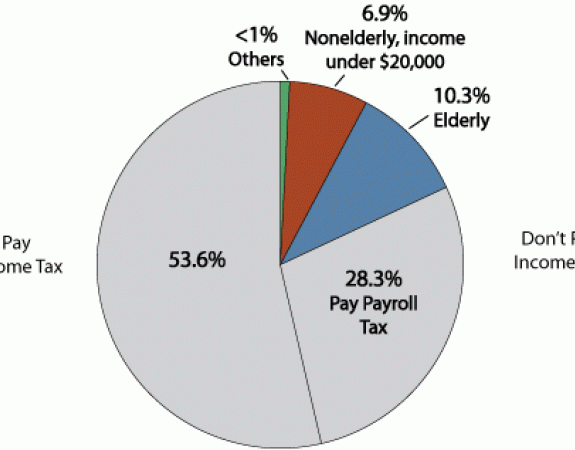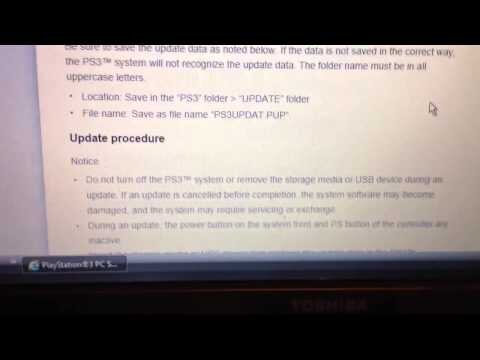Cash Flow from Operations Definition, Formula and Example
Contents:


Cash flow from operations is the section of a company’s cash flow statement that represents the amount of cash a company generates from carrying out its operating activities over a period of time. Operating activities include generating revenue, paying expenses, and funding working capital. It is calculated by taking a company’s net income, adjusting for non-cash items, and accounting for changes in working capital. The statement of cash flows is one of the three key financial statements. The cash flow statement reports the cash generated and spent during a specific period of time (e.g., a month, quarter, or year).
Cash flow is the movement of money in and out of a company. Full BioAmy is an ACA and the CEO and founder of OnPoint Learning, a financial training company delivering training to financial professionals. She has nearly two decades of experience in the financial industry and as a financial instructor for industry professionals and individuals.
Cash Flow From Assets
Credit purchases are reflected by an increase in accounts payable on the balance sheet, and the amount of the increase from one year to the next is added to net earnings. Changes in cash from investing are usually considered cash-out items because cash is used to buy new equipment, buildings, or short-term assets such as marketable securities. But when a company divests an asset, the transaction is considered cash-in for calculating cash from investing. This is net income plus all non-cash expenses, which usually include depreciation and amortization. Having a positive cash flow means there’s more money coming in while a negative cash flow indicates a higher degree of spending. The latter isn’t necessarily a bad thing because it may mean that you’re investing your money in growth.

A company with consistently low or negative FCF might be forced into costly rounds of fundraising in an effort to remain solvent. Similarly, if a company has enough FCF to maintain its current operations, but not enough FCF to invest in growing its business, that company might eventually fall behind its competitors. For yield-oriented investors, FCF is also important for understanding the sustainability of a company’s dividend payments, as well as the likelihood of a company raising its dividends in the future. While FCF is a useful tool, it is not subject to the same financial disclosure requirements as other line items in the financial statements. This is unfortunate because if you adjust for the fact that capital expenditures can make the metric a little lumpy, FCF is a good double-check on a company’s reported profitability.
Cash From Financing Activities
Net working capital is equal total assets minus total liabilities. Current assets are equal to total assets minus net working capital. Shareholders’ equity is equal to net working capital minus net fixed assets plus long-term debt. This increase would have shown up in operating income as additional revenue, but the cash wasn’t received yet by year-end.
- Cash flow from operations , or operating cash flow, describes money flows involved directly with the production and sale of goods from ordinary operations.
- Most companies report using the indirect method, although some will use the direct method (see CVS’s 2022 annual report here).
- The difference between levered and unlevered FCF shows if the business is overextended or operating with a healthy amount of debt.
- But the cash flow does not necessarily show all the company’s expenses.
There are several types of Cash Flow, so it’s important to have a solid understanding of what each of them is. When someone refers to CF, they could mean any of the types listed below, so be sure to clarify which cash flow term is being used. By studying the CFS, an investor can get a clear picture of how much cash a company generates and gain a solid understanding of the financial well-being of a company. The difference lies in how the cash inflows and outflows are determined.
How to Define Good Free Cash Flow
Free cash flow is the cash flow available for the company to repay creditors or pay dividends and interest to investors. Some investors prefer to use FCF or FCF per share over earnings or earnings per share as a measure of profitability because these metrics remove non-cash items from the income statement. However, because FCF accounts for investments in property, plant, and equipment (PP&E), it can be lumpy and uneven over time. Working capitalrepresents the difference between a company’s current assets and current liabilities.
Ovintiv to Acquire Core Midland Basin Assets – Ovintiv Investor Relations
Ovintiv to Acquire Core Midland Basin Assets.
Posted: Mon, 03 Apr 2023 07:00:00 GMT [source]
The cash flow statement measures the performance of a company over a period of time. But it is not as easily manipulated by the timing of non-cash transactions. As noted above, the CFS can be derived from the income statement and the balance sheet. Net earnings from the income statement are the figure from which the information on the CFS is deduced.
Using the indirect method, actual cash inflows and outflows do not have to be known. The indirect method begins with net income or loss from the income statement, then modifies the figure using balance sheet account increases and decreases, to compute implicit cash inflows and outflows. Most companies use the accrual basis accounting method.
A company’s cash flow is typically categorized as cash flows from operations, investing, and financing. Business activities are activities a business engages in for profit-making purposes, such as operations, investing, and financing activities. For example, if a customer buys a $500 widget on credit, the sale has been made but the cash has not yet been received.
How Are Cash Flows Different Than Revenues?
If a company’s sales are struggling, they may choose to extend more generous payment terms to their clients, ultimately leading to a negative adjustment to FCF. Alternatively, perhaps a company’s suppliers are not willing to extend credit as generously and now require faster payment. That will reduce accounts payable, which is also a negative adjustment to FCF. FCF is also helpful as the starting place for potential shareholders or lenders to evaluate how likely the company will be able to pay their expected dividends or interest.
Before this model can be created, we first need to have the purchase journal statement and balance sheet built in Excel, since that data will ultimately drive the cash flow statement calculations. Under U.S. GAAP, interest paid and received are always treated as operating cash flows. Cash receipts and cash payments resulting from acquisitions and sales of loans originally classified as loans held for sale. Cash flows should continue to be classified as operating activities, even if the reporting entity subsequently reclassifies the loans to be held for long-term investment. The definitions of the activity classes within ASC 230, combined with its waterfall model, results in a bias toward classifying cash flows as operating activities. When determining the appropriate classification, the FASB acknowledged that, in some situations, a reasonable case can be made for alternative classifications.
Explore our online finance and accounting courses and discover how you can unlock critical insights into your organization’s performance and potential. To find out which course is best for you, download our free flowchart. Cash flow refers to the net balance of cash moving into and out of a business at a specific point in time.
- This ratio uses operating cash flow, which adds back non-cash expenses such as depreciation and amortization to net income.
- UFCF can be reported in a company’s financial statements or calculated using financial statements by analysts.
- It is essential for assessing a company’s liquidity, flexibility, and overall financial performance.
- This is net income plus all non-cash expenses, which usually include depreciation and amortization.
The document shows different areas where a company used or received cash and reconciles the beginning and ending cash balances. The direct method of creating the cash flow statement uses actual cash inflows and outflows from the company’s operations, instead of accrual accounting inputs. The three types of cash flows are operating cash flows, cash flows from investments, and cash flows from financing. If you check undercurrent assetson the balance sheet, that’s where you’ll find CCE. If you take the difference between the current CCE and that of the previous year or the previous quarter, you should have the same number as the number at the bottom of the statement of cash flows. Companies with strong financial flexibility can take advantage of profitable investments.
The final line in the cash flow statement, “cash and cash equivalents at end of year,” is the same as “cash and cash equivalents,” the first line under current assets in the balance sheet. The first number in the cash flow statement, “consolidated net income,” is the same as the bottom line, “income from continuing operations” on the income statement. Positive cash flow from operating activities indicates that the core business activities of the company are thriving. It provides as additional measure/indicator of profitability potential of a company, in addition to the traditional ones like net income or EBITDA. It is the first section depicted on a company’s cash flow statement.
Essentials of Investments
This is another way of financing a company’s operations. Issuance of equity is an additional source of cash, so it’s a cash inflow. This is buying back, through cash payment, the equity from its investors. A company issues debt as a way to finance its operations. The issuance of debt is a cash inflow, because a company finds investors willing to act as lenders.
Baker Hughes Company Announces First Quarter 2023 Results … – Baker Hughes
Baker Hughes Company Announces First Quarter 2023 Results ….
Posted: Wed, 19 Apr 2023 11:00:00 GMT [source]
Depreciation involves tangible assets such asbuildings, machinery, and equipment, whereas amortization involvesintangible assetssuch as patents, copyrights, goodwill, and software. However, we add this back into the cash flow statement to adjust net income because these are non-cash expenses. The items in the operating cash flow section are not all actual cash flows but include non-cash items and other adjustments to reconcile profit with cash flow. For example, it’s possible for a company to be both profitable and have a negative cash flow hindering its ability to pay its expenses, expand, and grow. Similarly, it’s possible for a company with positive cash flow and increasing sales to fail to make a profit—as is the case with many startups and scaling businesses.
The statement of cash flows acts as a bridge between the income statement and balance sheet by showing how cash moved in and out of the business. Cash flows can be analyzed using the cash flow statement, a standard financial statement that reports on a company’s sources and usage of cash over a specified time period. Corporate management, analysts, and investors are able to use it to determine how well a company can earn cash to pay its debts and manage its operating expenses. The cash flow statement is one of the most important financial statements issued by a company, along with the balance sheet and income statement. Free cash flow represents the cash that a company generates after accounting for cash outflows to support operations and maintain its capital assets. Under IFRS, there are two allowable ways of presenting interest expense or income in the cash flow statement.
Thus, the increase in receivables needed to be reversed out to show the net cash impact of sales during the year. The same elimination occurs for current liabilities in order to arrive at the cash flow from operating activities figure. Cash flow from investing or investing cash flow reports how much cash has been generated or spent from various investment-related activities in a specific period. Investing activities include purchases of speculative assets, investments in securities, or the sale of securities or assets. TheFinancial Accounting Standards Board recommends that companies use the direct method as it offers a clearer picture of cash flows in and out of a business. Therefore, net income was overstated by this amount on a cash basis.

Therefore, cash is not the same as net income, which includes cash sales as well as sales made on credit on the income statements. Because the cash flow statement only counts liquid assets in the form of CCE, it makes adjustments to operating income in order to arrive at the net change in cash. Depreciation and amortization expense appear on the income statement in order to give a realistic picture of the decreasing value of assets over their useful life. Operating cash flows, however, only consider transactions that impact cash, so these adjustments are reversed.
A cautious investor could examine these figures and conclude that the company may suffer from faltering demand or poor cash management. Below is a breakdown of each section in a statement of cash flows. While each company will have its own unique line items, the general setup is usually the same. Operating cash flow plus net capital spending plus the change in net working capital.
In this situation, an investor will have to determine why FCF dipped so quickly one year only to return to previous levels, and if that change is likely to continue. FCF reconciles net income by adjusting for non-cash expenses, changes in working capital, and capital expenditures. Management and investors can use free cash flow to determine a company’s financial health.
Fitch Affirms Seven Tranches from Two Rockford Tower-Managed … – Fitch Ratings
Fitch Affirms Seven Tranches from Two Rockford Tower-Managed ….
Posted: Fri, 21 Apr 2023 17:14:00 GMT [source]
The book value is equal to the market value minus the accumulated depreciation. The book value is the greater of the initial cost or the current market value. Cash flow from investing activities reports the total change in a company’s cash position from investment gains/losses and fixed asset investments.
The cash flow statement , is a financial statement that summarizes the movement of cash and cash equivalents that come in and go out of a company. The CFS measures how well a company manages its cash position, meaning how well the company generates cash to pay its debt obligations and fund its operating expenses. As one of the three main financial statements, the CFS complements the balance sheet and the income statement. In this article, we’ll show you how the CFS is structured and how you can use it when analyzing a company. Investors examine a company’s cash flow from operating activities, within the cash flow statement, to determine where a company is getting its money from.